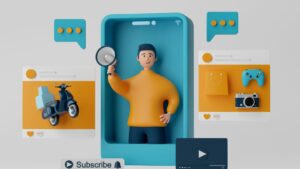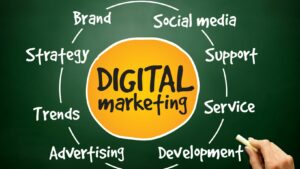In today’s fast-paced digital landscape, web design and digital marketing have become inseparable allies. As businesses strive to capture attention online, a well-crafted website serves as the cornerstone of any successful marketing strategy. It’s not just about aesthetics; effective web design enhances user experience, fosters engagement, and ultimately drives conversions.
Digital marketing, on the other hand, amplifies a brand’s reach through targeted strategies like SEO, social media, and content marketing. When paired with intuitive web design, these efforts create a cohesive online presence that resonates with audiences. As the digital world continues to evolve, mastering the synergy between web design and digital marketing is crucial for brands aiming to stay ahead of the competition.
Web Design and Digital Marketing

Web design and digital marketing intersect by creating a seamless user experience that aligns aesthetics with functionality. In digital marketing, visual design captivates users and guides them through the customer journey. Effective web design integrates digital marketing tools, like search engine optimization (SEO), ensuring a site is discoverable and ranks well on search engines. Users benefit from a responsive web design that augments digital marketing campaigns, leading to increased engagement and conversion rates. Additionally, cohesive branding across both platforms enhances recognition in digital marketing efforts. By harmonizing web design and digital marketing, businesses establish a compelling online presence that stands out in the crowded digital space, thus attracting and retaining customers.
Understanding Web Design
Web design shapes how websites look and function, blending aesthetics with usability. Effective web design ensures a seamless user journey, integrating intuitive navigation and responsive layouts to enhance user interaction. The role of web design in digital marketing is pivotal as it influences user perception and engagement. A visually appealing web design builds credibility and trust, critical for converting visitors into customers.

Incorporating digital marketing strategies like SEO is essential in web design. When web design includes optimized content and meta tags, it boosts search engine visibility and draws organic traffic. Additionally, responsive web design adapts to various devices, ensuring a consistent experience. This adaptability is crucial in digital marketing, given the diverse user access points.
Web design and digital marketing must align to create cohesive branding. By ensuring a unified style and message across platforms, brands can strengthen their identity. A strong web design paired with digital marketing maximizes customer engagement and increases conversion opportunities.
Tools and Technologies
Web design and digital marketing thrive on cutting-edge tools and technologies. Several platforms offer advanced solutions for creating stunning websites and executing impactful marketing strategies:

- Content Management Systems (CMSs): CMSs like WordPress and Joomla facilitate efficient web design by allowing users to manage content without extensive technical expertise. These systems support SEO optimization and digital marketing strategies.
- Search Engine Optimization (SEO) Tools: Tools like SEMrush and Ahrefs play a pivotal role in digital marketing. They provide insights into keywords, backlinks, and competitors, boosting website visibility.
- Graphic Design Software: Adobe Creative Cloud and Canva enable web designers to create visually appealing graphics that enhance user experience. Strong visual elements support digital marketing initiatives.
- Social Media Management Tools: Platforms like Hootsuite and Buffer assist in managing online presence and automating posts, broadening the reach of digital marketing efforts.
Current Trends and Future Outlook
As the digital landscape continues to evolve businesses must stay attuned to the latest trends in web design and digital marketing. The integration of AI-driven analytics and personalized content is becoming increasingly vital for enhancing user engagement. With the rise of mobile browsing optimizing websites for mobile responsiveness is no longer optional but essential. Furthermore the growing importance of video content and interactive elements in web design is reshaping how brands engage with their audiences.
By continually refining their web design and digital marketing strategies companies can ensure they not only meet current consumer expectations but also anticipate future demands. This proactive approach will solidify their online presence and drive sustainable growth in the digital era.



